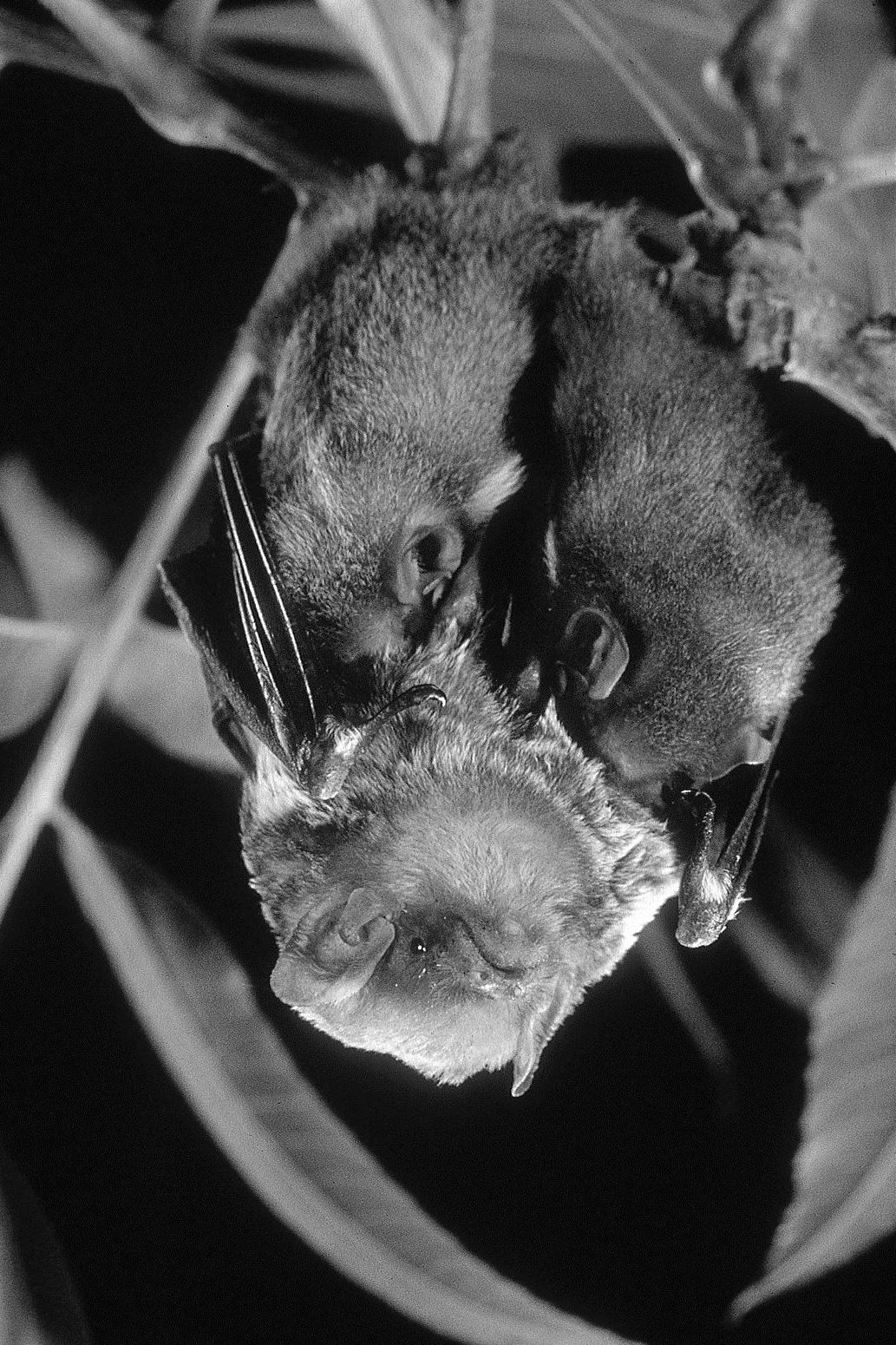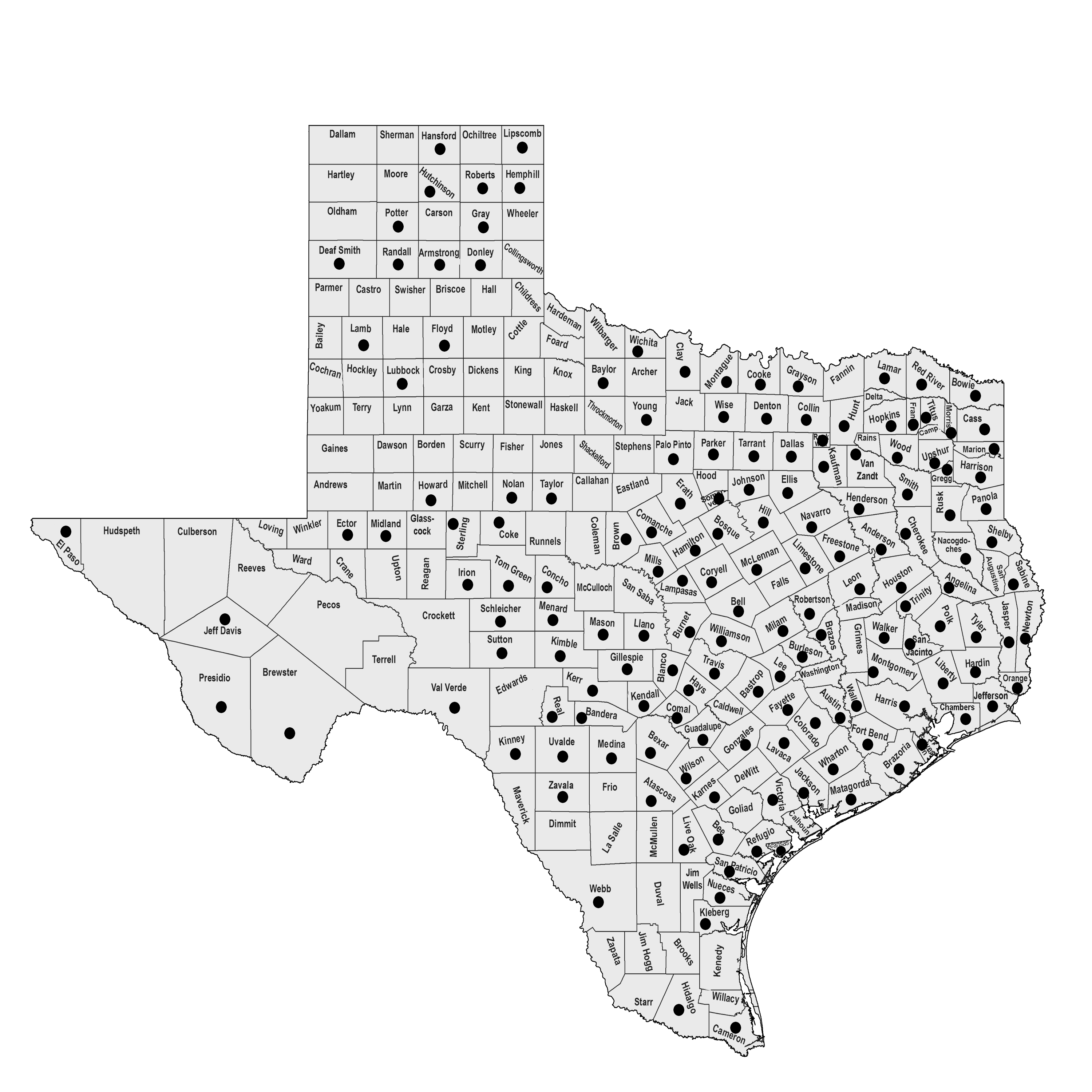EASTERN RED BAT
Lasiurus borealis (Müller 1776)
Order Chiroptera : Family Vespertilionidae
DESCRIPTION. A medium-sized, distinctly reddish bat with ears short, broad, rounded, and partly furred; membrane between hind legs densely furred above. Not easily confused with any other bat except L. seminolus and L. blossevillii. Upperparts reddish, the tips of the hairs white, producing a frosted appearance; males usually lack the white-tipped hairs and are much redder. Dental formula: I 1/3, C 1/1, Pm 2/2, M 3/3 × 2 = 32. Averages for external measurements: total length, 108 mm; tail, 48 mm; foot, 9 mm; ear, 12 mm; forearm, 40 mm. Weight, 10–15 g.

DISTRIBUTION. Statewide, but especially common in the eastern and central parts of the state; less common in the northern and western parts of the state.

SUBSPECIES. Monotypic species.
HABITS. Eastern red bats are forest-dwelling, solitary bats and are one of the few North American species that roost in the open in trees. They do not use caves, mine tunnels, or similar sites often frequented by other species. Roosting sites are common in tree foliage or Spanish moss, where the bats are concealed as they resemble dead leaves.
This bat is migratory and moves northward in spring and southward in fall. It is considered a year-round resident of eastern Texas but may be only a summer migrant in the western part of the state. These bats winter in the southern United States, Mexico, Bermuda, the Antilles, and perhaps even farther south.
They appear on the wing early in the evening to forage, and they typically follow a specific territory while feeding. They often hunt around street lamps in towns and occasionally alight to capture insects. Twilight-flying insects such as moths, scarab beetles, planthoppers, flying ants, leafhoppers, ground beetles, and assassin beetles are among their favorite prey items.
At northern latitudes, mating takes place in August and September, sperm is stored in the uterus and oviducts through the winter, and fertilization and parturition occur in spring. Limited mating also takes place in the spring. A similar reproductive chronology most likely happens in eastern Texas. One to five young (average 2.3) are born in May or June after a gestation period of 80–90 days. This is one of the few species of bats that have more than two teats (they have four), which enables the females to successfully raise three or four young. Genetic evidence suggests that litters may be sired by more than one male.
Each baby bat weighs in excess of 1 g at birth. The young are able to fly at 3–4 weeks but continue to nurse until they achieve adult size. Juvenile red bats have a high mortality rate (as high as 30%); predation, flying accidents, and bad weather are the most common causes of death. Known predators include opossums, sharp-shinned hawks, American kestrels, merlins, loggerhead shrikes, great horned owls, roadrunners, and blue jays. This last bird is probably the most important predator of red bats in eastern North America.
POPULATION STATUS. Common, year-round resident. The eastern red bat occurs statewide, but it is much more common in the eastern part of the state, where it is a year-round resident, than in the Trans-Pecos, where it occurs only in the summer.
CONSERVATION STATUS. The IUCN status of the eastern red bat is least concern because of its wide distribution, presumed large population, occurrence in protected areas, and tolerance to some degree of habitat modification. It is not included on federal or state lists of concerned species. While there is no reason to be worried about its status right now, mortality has been high around wind turbines in some regions of the United States and this situation bears watching in Texas.
From The Mammals of Texas, Seventh Edition by David J. Schmidly and Robert D. Bradley, copyright © 1994, 2004, 2016. Courtesy of the University of Texas Press.
Natural Science Research Laboratory
-
Address
Museum of Texas Tech University, 3301 4th street, Lubbock, TX 79409 -
Phone
806.742.2486 -
Email
nsrl.museum@ttu.edu

